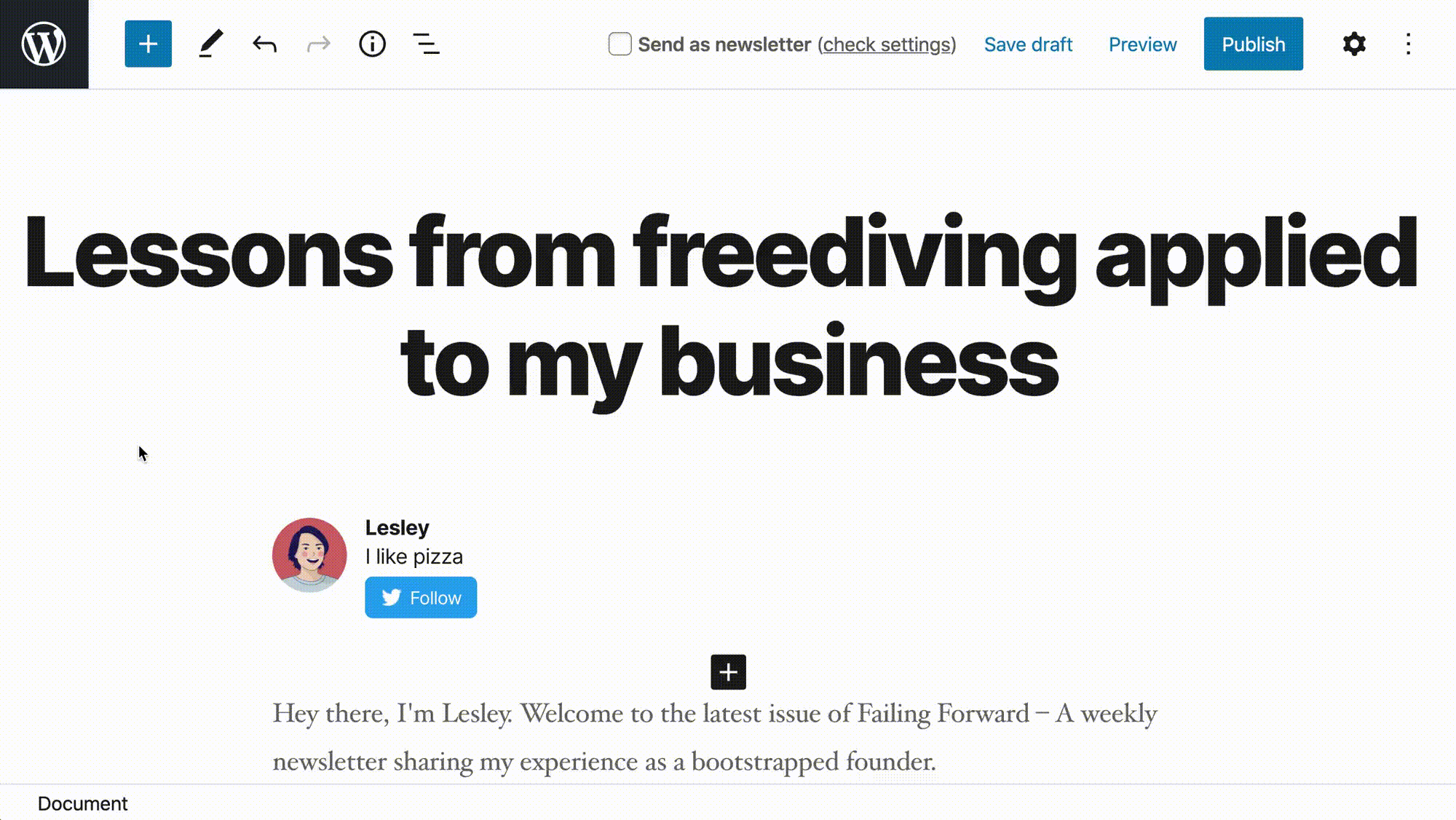
How to Turbocharge your newsletter process using WordPress
Is your newsletter process faster than your washing machine?
This is probably not a question you’ve ever really considered. But the truth is, if you can wash your smalls in less time than it takes to produce your newsletter, then you’re missing out on some serious productivity potential.
The 15-minute newsletter
If you’re like most digital publishers, sending your newsletter has become a major activity – perhaps even a whole day’s activity. After all, cutting, pasting, importing, cropping, approving, testing and troubleshooting all take time. And that’s before you have the joy of post-campaign analysis and reporting.
The seemingly simple act of sending an email has somehow become a full time job in itself.
But it needn’t be this way. With the right technology choices, it’s possible to reduce this arduous task to just 15 minutes. Imagine what else you could achieve in your media business with this newly acquired free time.
Why do email newsletters take so long to create?
HubSpot recently shared an infographic outlining the convoluted process that goes into sending a newsletter:
If this infographic is anything like the manual process you go through to send your e-news each week (or day?!) it’s no wonder you’re feeling exhausted.
Why are email newsletters so time consuming?
When a group of content publishers were questioned about their most time-consuming newsletter activity, their responses highlighted a serious efficiency problem.
Unsurprisingly, copywriting was the most popular response (albeit only just), which makes sense because creating quality content takes time. But what’s particularly concerning about the above chart is that more than two thirds of respondents spend more time tinkering with their tech and templates than they do thinking about the content!
This is madness given that technology is meant to save time. However, the reality is that in their quest for efficiency, publishers often end up drowning in gadgets, workarounds and performance-sapping plugins.
It’s in this unfortunate state, that they typically reach out to The Code Company for some emergency tech stack decluttering.
Our guiding philosophy has always been ‘anti-complexity.’ Find the simplest way to help publishers achieve their most powerful business results. And powerful results nearly always start with WordPress.
WordPress: Your secret newsletter weapon
There are dozens of reasons why WordPress is the best CMS for publishers – you can read about some of them here.
In this article, we’ll focus on how you can use WordPress to eliminate the pain of sending email newsletters and increase efficiency.
As a result of keeping everything inside a single system, you’ll also:
- Eliminate ‘cut and pastes’
- Fast track approvals
- Boost SEO
- increase ROI
3 ways WordPress publishers can optimise newsletter efficiency
1. Use Prospect-Experience Design (PX) to build your email list
When it comes to building paid subscriptions, newsletters have the highest conversion rate of all channels. Yet without a healthy mailing list, there’s no audience for you to convert. That’s why the first step to creating high-performance newsletters is a website that drives conversions. There are endless resources about User Experience Design (UX) – but having lots of happy visitors isn’t the same as having lots of happy subscribers.
If you want to design your publishing site in a way that encourages audiences to take specific actions (i.e. sign up for your newsletter) then consider implementing the principles of Prospect Experience Design (PX).
The second part of driving subscriptions is a solid tech stack. That means having a website that is secure, optimised for Google and loads quickly to avoid losing precious visitors.
READ MORE: Fast & Easy: 7 ways publishers can boost website performance
2. Send your newsletters straight from WordPress

The Code Company had great success using Newsletter Glue recently during a Substack to WordPress migration. This particular publisher had grown to a point where their SaaS platform was limiting engagement and revenue potential, yet they were reluctant to lose their effortless UX.
The addition of Newsletter Glue essentially recreated the Substack publishing experience within their CMS, allowing them to push content directly from WordPress Block Editor to subscribers with the simple tick of a box.
For the majority of growing publishers, a plugin like Newsletter Glue is all it takes to streamline your entire email process.
3. Build simple custom newsletter tools for WordPress if required
If you’re running a more complex publishing business such as a newsroom with an email product, there’s still no reason for your tech stack to be complicated.
A simple custom plugin can be transformative – as Australian marketing and media publication Mumbrella discovered. They have a daily newsletter that goes out to around 100,000 subscribers. When we first met them, they were building these newsletters manually inside a third-party email marketing product. This process would sometimes take three hours, every day.
The Code Company created a flexible WordPress-native newsletter builder tool which enables the editorial team to curate and design the articles straight out of the CMS. The tool automatically includes generic pieces of content that appear on every newsletter and pulls the most recent listings from the job board into the newsletter.
This was not an expensive or complicated project, but saved Mumbrella hundreds of hours of manual activities and repetition over the year.
Is it time to reevaluate your newsletter process?
As Einstein famously reminds us, doing the same thing over and over and expecting to get different results is a form of insanity.
So if you’re tired of wasting time, discovering errors and juggling multiple systems, perhaps it’s time to reevaluate how your media business creates and sends newsletters.
We’d love to help.

